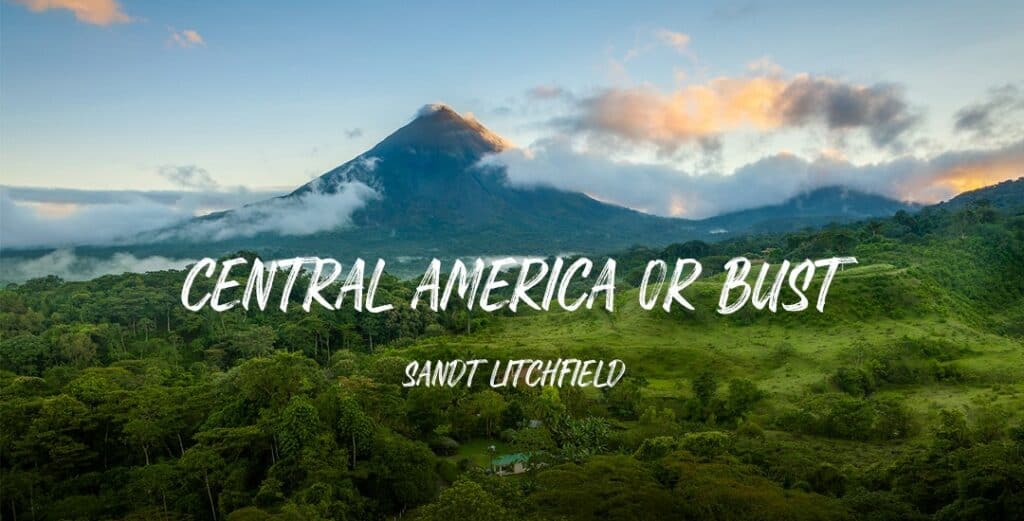Sandt Litchfield Guest Contributor
It was 1996. I was living in Los Angeles when the plans were made.
Along with Jacques Howlett and two other friends Fred and Ivan, we decided to drive to Costa Rica. Yup you heard that right, all the way from Los Angeles to Costa Rica. Fred had purchased an interlocking brick making machine that we thought might help to build affordable housing in a developing country. We also thought we’d make a vacation of it.
It was exiting. What an idea: making a difference in the world, seeing different countries in central America, living in Costa Rica for three months. Great.
Somehow upon departure we were in a rush. One would think the best way to Costa Rico would be through San Diego and Tijuana, but it turned out the best way was to follow the southern border as far as Nuevo Laredo, Texas.
Howlett and I got through customs, but Fred and Ivan were stopped and forced to unpack a completely packed Ford Explorer. How could we get them across? We drove a few blocks back into the United States and then carefully covered the new Windows 95 computer with dirty laundry so they wouldn’t see the valuable item. We were careful to try entering at a different side of customs. This time we all got through, even after the customs agent got a look at the dirty underwear.
The order was: Mexico, Guatemala, Honduras, El Salvador, Nicaragua, and finally Costa Rica.
Of Mexico I remember the beautiful and ornate churches in many cities but especially the grandiose one in San Luis Potosi. Oh I remember that I was impressed with the highway that we were on … until we missed an exit and had to drive 30 miles before we could make a U-turn. Why would they make it so inefficient?
We were in a rush so we were going as fast as we could. Every few miles we’d hit a really big pothole and I wondered if it was going to crack an axle.
The most memorable thing to me was the poverty, the lack of infrastructure and little markets that had freshly painted Corona Beer Labels on the entire side of the stores. It looks like the people didn’t have that much to do, but when they did do something it was repainting their Corona Beer signs.
We crossed the border into Guatemala – the greenest, most beautiful of the five countries we drove through. We never could drive at night which would’ve gotten us there in probably seven days instead of the 14 days it took us. But we were warned that it was dangerous to be outside at night because of the Bandidos so we stayed in motels every night.
The motels had tile on all the floors. There was much more tile than I was used to seeing in the United States. I figured that the reason was that labor was so cheap at about $10-$20 a day per worker. In Guatemala we’d see a soldier or two every 20 miles or so, as the country was going through a Civil War. Howlett had taken the same trip two years earlier and he saw two dead bodies.
Guatemala is known for its Mayan ruins which are beautiful and historically very interesting, and though Howlett pleaded we stop to view them, we had to keep moving to be in time for the delivery of the interlocking brick making machines.
Next was Honduras which didn’t strike me as anything special.
What stands out is the customs/ border that we would cross in each country. We’d have to pay them about $100 before standing around and watch our passports go around the room to about 20 customs officials for approval. I guess there was so little work, so few job opportunities for these men, that they had nothing better to do.
When we first finally got to Costa Rica I went to a small office supply store. At the register was the lone employee who was a manager, and she asked me straight out, “Are you married?“
I was so blown away. As an American man I was used to having to do some light to heavy lifting to get a date and this manager made it just so beautifully easy. All I had to do was say, “No, but would you like to have coffee?” She was looking for a significant other and came right out with that desire so that was pretty cool. We became friends but no relationship ensued. She was a good person I could tell and I wish that I didn’t have to leave the country after the interlocking brick making machines arrived.
As it turns out the machines arrived a month late. I guess we could have looked at those ruins, huh Howlett?
Living on credit cards, the money ran out after three months and we flew back to Los Angeles.
Fred, who had purchased the brick machines, grew the business and sold it for $1 million before heading back to Los Angeles.
Overall, a fun adventure.
